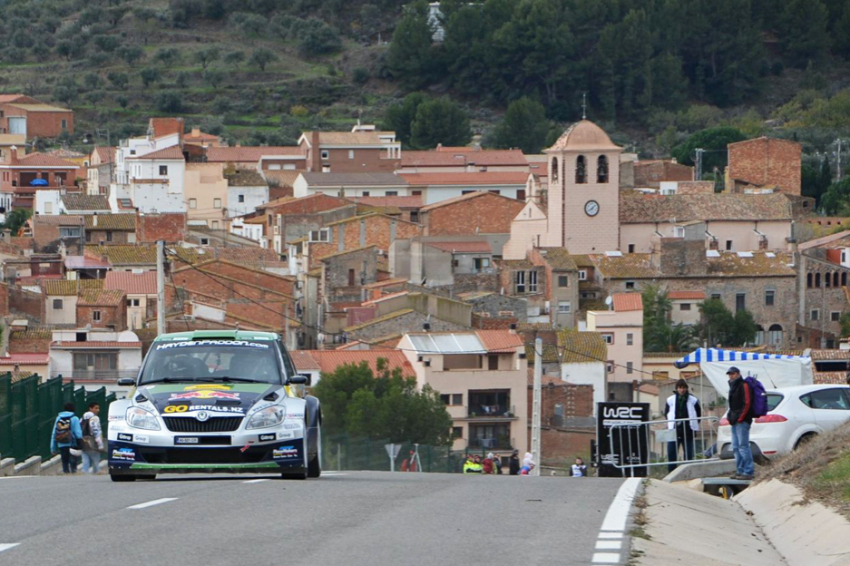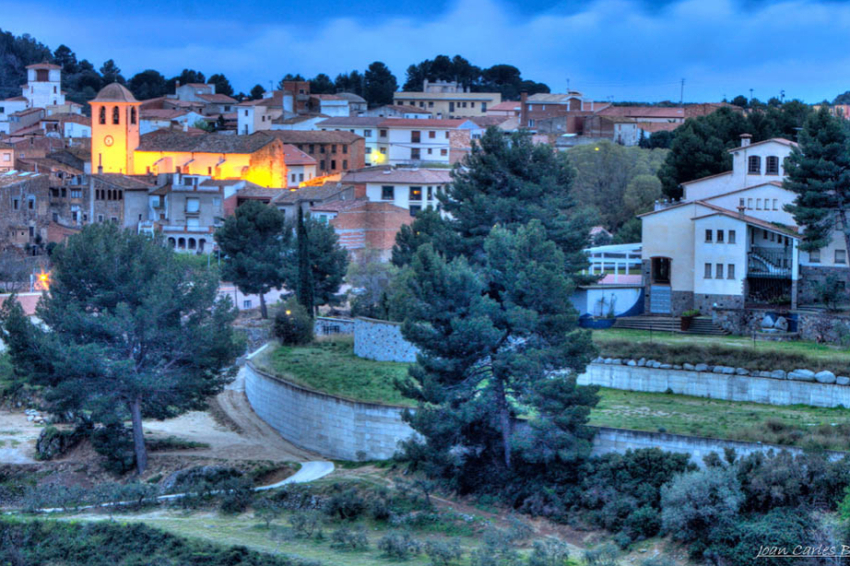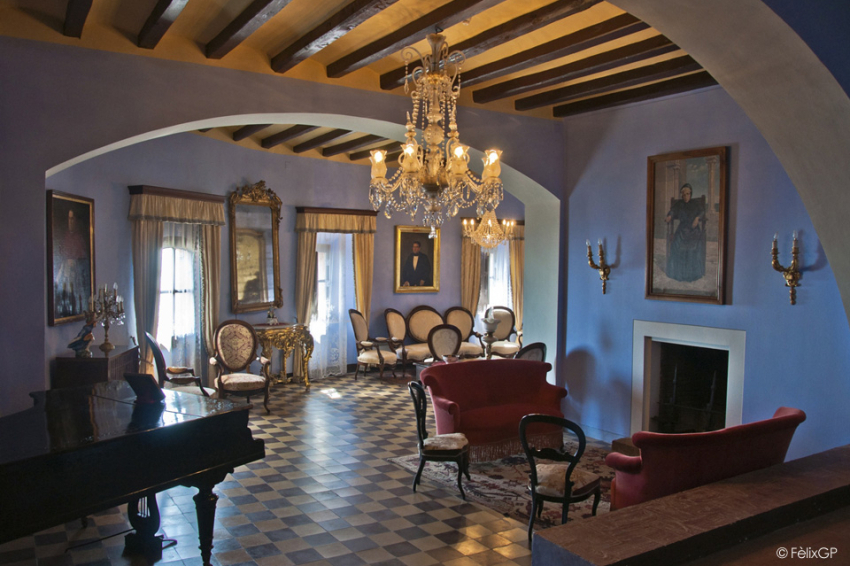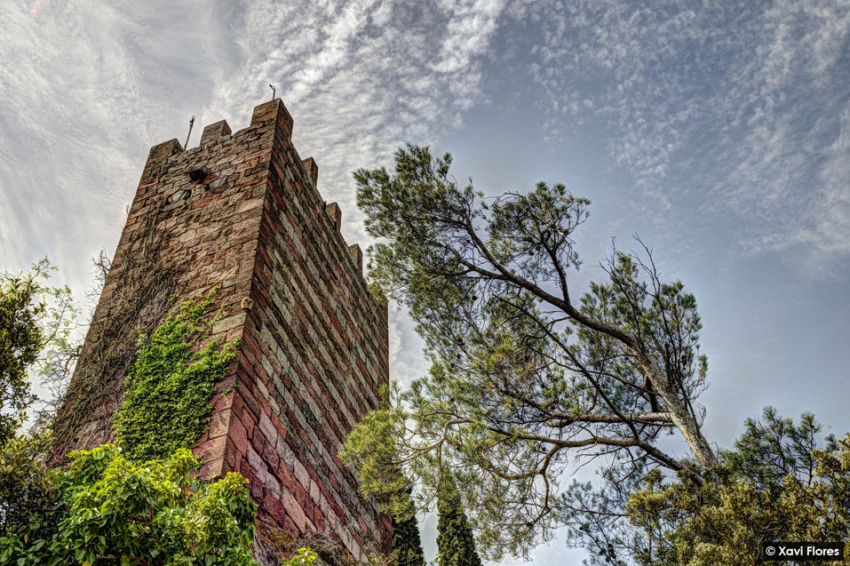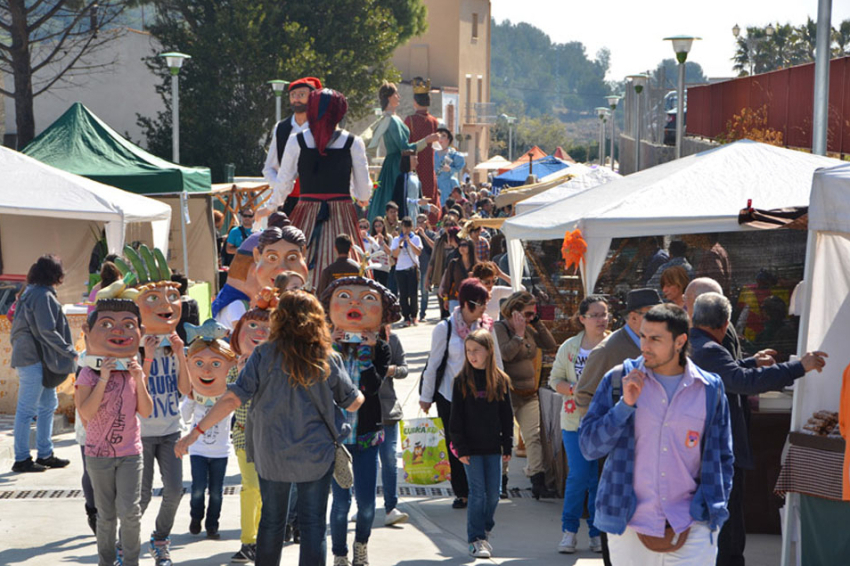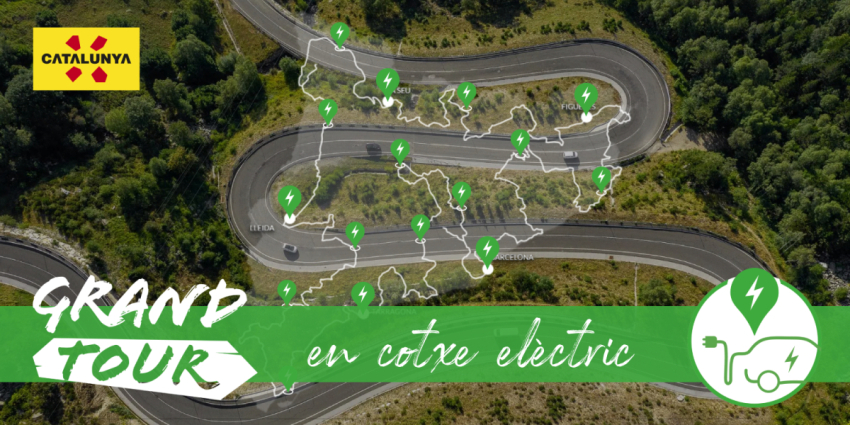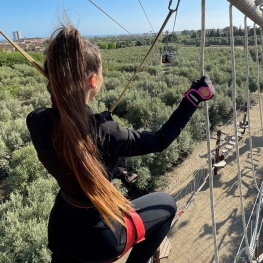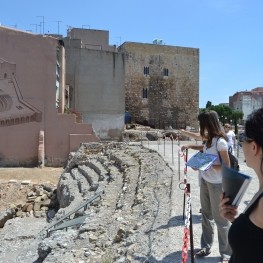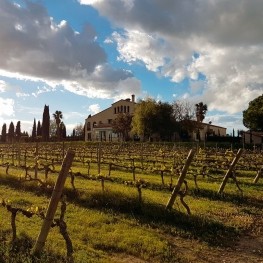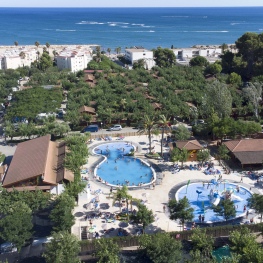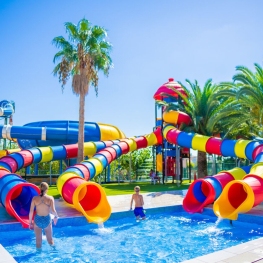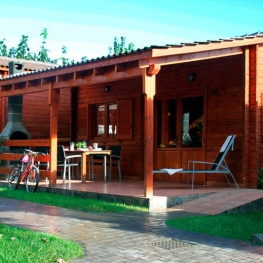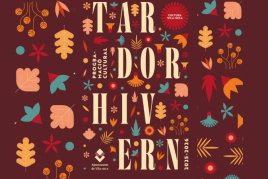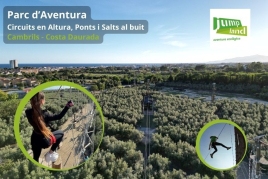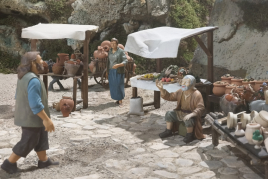Riudecanyes
Riudecanyes is a small town located inland on the Costa Dorada. With an area of 16.54 km², it lies in the southern part of the Baix Camp region, on the southern slopes of Puigmarí and in the eastern part of the Argentera mountain range.
The municipality is primarily mountainous, reaching its highest point at the summit of Escornalbou, where the hermitage of Santa Bárbara stands, at an altitude of 694 meters. The town itself lies below the reservoir, to the right of the stream of the same name, and is only 10 km as the crow flies from the port of Cambrils.
Three elements define the personality and uniqueness of Riudecanyes: its streets, the castle and the reservoir.
The streets are named after the days of the week, and it is only relatively recently that this list has had to be expanded with new names. The castle-monastery of Sant Miquel de Escornalbou, documented since the 12th century and situated on one of the most prominent hills in the area, is now a must-see. The Riudecanyes reservoir, located between the town and the mountains, lends a special character to the pine forest landscape and is an ideal spot for both walking and fishing.
It is a place between mountains and sea that allows the visitor to delve into the "spirit" of small towns.
A bit of history
The first documentary references to Riudecanyes date from the 12th century. From 1387, it effectively became the center of the barony of Escornalbou, which encompassed eight neighboring districts covering an area of 101 km² and was owned by the archbishops of Tarragona. The mayor, the bishop's representative, resided there, as did the barony's notary and the tax house, where manorial rights were managed. The barony disappeared in 1811 with the abolition of the feudal system.
Since the establishment of the Corpus Christi festival in the 15th century, the octave was celebrated, the origin of neighborhood festivals and street names: the days of the week, except Thursday.
In the area, remains from the Middle Paleolithic period have also been found, evidence of the existence of an ancient pre-Roman settlement.
The Barony of Escornalbou
The Barony of Escornalbou was established between 1162 and 1170 when King Alfonso II granted the unpopulated territory of Escornalbou to Alberto de Castellvell. His purpose was for Castellvell to fortify the area, encourage its population, and found a canons' monastery dedicated to Saint Michael, under the jurisdiction of the Tarragona diocese. The barony encompassed the present-day municipalities of Vilanova de Escornalbou, Colldejou, Riudecanyes, Duesaigües, Pradell, Argentera, and Torre de Fontaubella.
Culture
The most emblematic building in the municipality is the monastery of Sant Miquel de Escornalbou. Despite numerous renovations, elements of Romanesque architecture, such as the church and the portal, are still preserved.
The parish church of Sant Mateu was built in 1582. It is a Renaissance church made of stone and mortar, with hewn stone columns and brick and plaster vaults. Originally, it had a magnificent high altar (1602), eight chapels, and fourteen altars.
The bell tower, twenty-five meters high, has two distinct sections. The clock, dating from 1845, has been restored several times.
At the end of the 19th century, the construction of a reservoir on the Riudecanyes stream was promoted to guarantee the water supply to Reus. The first stone was laid in 1904 and the project became operational in 1918. In November 1991, an expansion was inaugurated, increasing the capacity to 5.2 hm³.
Currently, the water is used for irrigation in the region and to supply several nearby towns.
Places of interest
Escornalbou Castle
The Castle-Monastery of Sant Miquel de Escornalbou is a construction that originated between the late 12th and early 13th centuries. Its construction was promoted by Alfonso I, who later ceded its ownership to the Church of Tarragona.
The castle, which became the center of an extensive barony, and the church of Sant Miquel initially housed Augustinian monks and, from 1580, Franciscan communities until the confiscation of church property in 1835. In 1843 it was bought by John, who carried out the reconstruction and began its comprehensive restoration.
Together they amassed a remarkable collection of prints, ceramic pieces, various objects, and an outstanding library.
Among the most important features of the complex are the Romanesque church, the remains of the chapter house and the cloister, as well as the residence of King Toda himself, which has been meticulously restored. A visit provides a clear picture of what a stately home was like at the beginning of the 20th century.
From the arches of the cloister and, above all, from the hermitage of Santa Bárbara, located at the highest point of the complex, you can enjoy privileged views over the regions of Tarragona.
Riudecanyes Reservoir
In 1897, the Reus City Council commissioned engineers Josep Móra, Alfons Benavente and also Francesc Macià, who years later would become president of the Generalitat, to conduct a study to guarantee the arrival of water to both the population and the cultivated fields.
After analyzing several options, the Riudecanyes reservoir project, designed by engineer Gaietà Úbeda y Sarachaga, was presented in 1903. By 1907, the main works were already completed. Subsequently, it was decided to expand the dam, a phase directed by engineer José Pérez de Petinto y Losada, and completed in 1919.
In the 1930s, a new phase of interventions began under the direction of Joaquim Blasco, which increased the reservoir's capacity. These works continued until 1951. Currently, the reservoir covers approximately 40 hectares and can store up to 5 cubic hectometers of water.
The area offers a privileged setting for strolling and enjoying the scenery. If we stop along the road to Duesaigües, heading towards Riudecanyes, we can contemplate a particularly enchanting sight: the still, blue water of the reservoir rises above the distant sea, shimmering behind the dam wall. At this single point, three characteristic blues of the Baix Camp region overlap: the blue of the freshwater reservoir, the blue of the ever-changing sea, and the blue of the clear sky that graces the villages open to the Mediterranean.
Church of San Mateo de Riudecanyes
The parish church of Sant Mateu was built in 1582. It is a Renaissance church constructed of stone and mortar, with hewn stone columns and vaults made of brick and plaster. Originally, it had an imposing main altar dating from 1602, as well as eight chapels and fourteen altars.
The bell tower, about twenty meters high, is made up of two distinct sections. The clock, built in 1845, has undergone several restorations over time.
Nearby routes
See all routes »- Route of the castles in Catalonia
- Route through the Baix Camp (a 2.4 km)
- Route from Vilanova d'Escornalbou to… (a 2.8 km)
- Oil cycling route in Mont-roig del… (a 2.8 km)
- Route through the hazelnut landscapes (a 4.5 km)
What to do
Muntanyes de la Costa Daurada
The municipalities of the Costa Daurada Mountains make up a territory of…
Jumpland Aventura Ecològica
Cambrils (a 10.9 Km)Venture into the world of Jumpland Aventura, a park for everyone who…
Celler Ferrer Bobet
Falset (a 10 Km)The Ferrer Bobet Winery has great respect for the long winemaking tradition…
La Teva Ruta
Reus (a 12.5 Km)Guided tours of various monuments and towns in the Camp de Tarragona.…
Where to eat
Restaurant Denver Cambrils
Cambrils (a 11.2 Km)From the legendary Xiri to the current restaurant, Denver offers a creative…
L'Orangerie de Clos Barenys
Vila-seca (a 12.8 Km)Under our fires, we prepare haute Mediterranean cuisine by selecting the finest…
Arena Tapas Restaurant
Salou (a 15.6 Km)Enjoy an innovative cuisine, with high-quality local products of proximity, with an…
Where to sleep
Hotel Fonda El Camí
Cambrils (a 10 Km)Located in the historic center of Cambrils, 40 rooms with all amenities.…
Càmping La Llosa
Cambrils (a 10 Km)We address a family audience, that's why we have been awarded the…
Càmping Capfun Mirmanda
Cambrils (a 10.4 Km)Camping Mirmanda is simply ideal for discovering the Costa Daurada with the…
Càmping Joan
Cambrils (a 10.1 Km)Camping Joan, located right on the beach, is the perfect place for…


